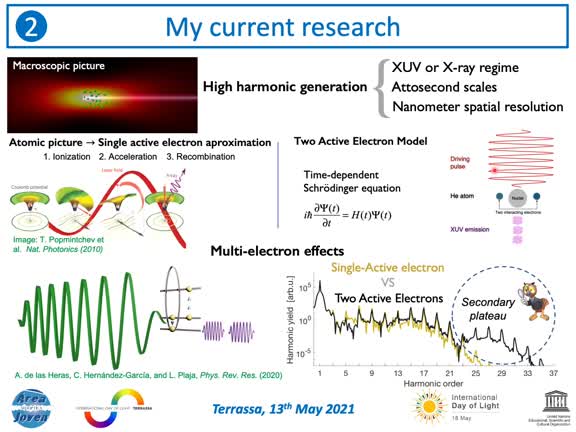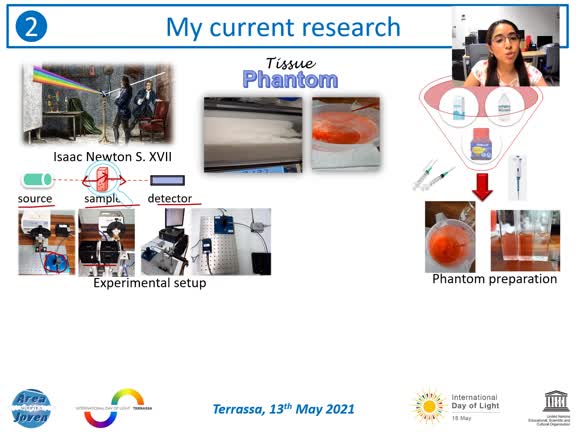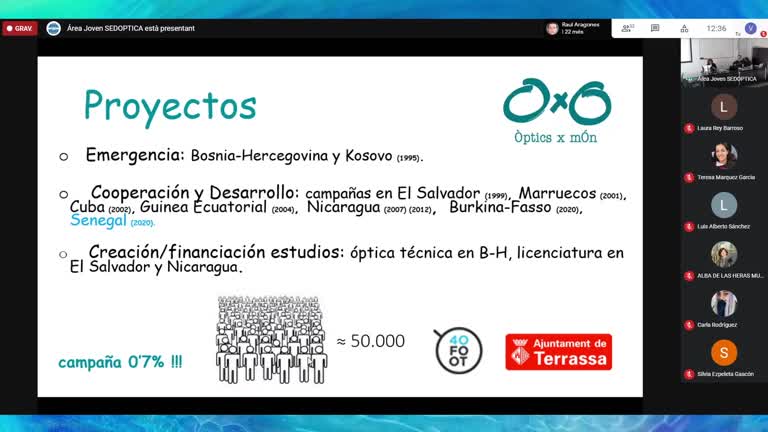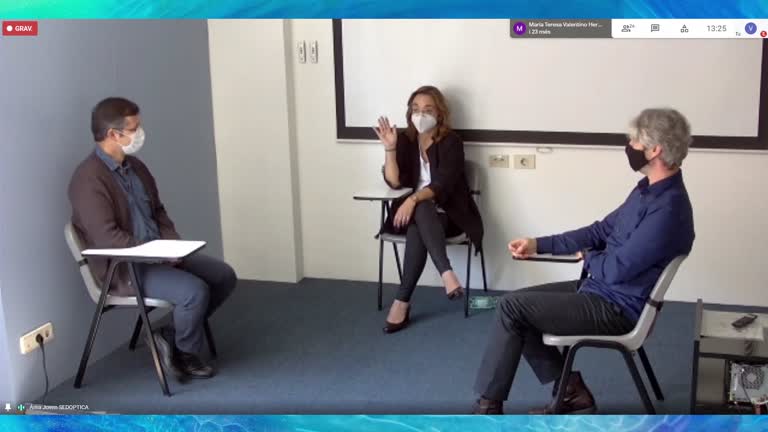Sèrie: Light Research Café: Junior Explosion!
14 de maig 2021
New Interferometric Label-Free Biosensing System for Food Allergy Diagnostics in Biophotonic Sensing Cells
Accés obert
14 de maig 2021
In this scientific work we developed a high-performance in vitro detection system for food allergy in a multiplex serologic IgE format which improves the specificity and selectivity of our biosensors, reducing the cross-reactivity and the matrix-effect in real serum assays. We demonstrated the effectivity of the system for one molecular allergen, with promising results to become a real alternative to existing CRD diagnostic tests based on specific IgE detection. We accomplished a novel assay framework inspired by the chemical and optical properties of SiO2 NPs and by the flexibility of the interferometric Fabry-Perot transducer used which helped us to solve the unspecific adsorption problem in diagnostic test based on specific IgE detection by separating the objective molecule, IgE, from the rest of the serum out of the sensor. The novelty of the methodology lies on the use of a given size of SiO2 NPs as filtering and signal amplification system to separate IgE from IgG and to improve the interferometric optical signal, respectively
Multi-electron correlations in the emission of coherent extreme-ultraviolet light
Accés obert
14 de maig 2021
Electron-electron correlation is at the origin of complexity in multi-electron systems. Since the total response of a complex system is not the sum of its independent constituents, the many-electron problem remains a computational challenge even though understanding correlation mechanisms is essential for a full control of the electric and magnetic properties of matter. In this work, we disentangle the fingerprints of correlated electron dynamics in the strong laser-atom interaction of the simplest multi-electron system. The two electrons of the helium atom interacting with an intense electromagnetic field represent an extraordinary scenario to explore correlations from a fundamental view, since we can perform a numerical integration of the time-dependent Schrödinger equation. Our theoretical results predict a correlation mechanism of back-reaction showing a distinctive signature in high-order harmonic generation. An extension of the high-harmonic spectra towards higher frequencies encodes the information of back-reaction. This finding demonstrates that correlation phenomena can be tracked with high-harmonic spectroscopy, and opens the possibility to experimentally probe complex systems.
Optical properties of a simple model of soft biological tissue
Accés obert
14 de maig 2021
The study of tissue optics is relevant for developing innovative non-invasive diagnostic and therapeutic techniques, and optical phantoms that simulate light propagation processes through soft biological tissue are required to evaluate the performance and calibrate different medical imaging modalities. Liquid lipid based low-cost phantoms were prepared, with cow’s milk as scattering material, Red India ink as the absorbing material and demineralized water as the matrix material since it provides a soft medium biologically compatible with the addition of organic molecules. Two experiments were carried out for characterization of this tissue model. First, collimated and diffuse transmittance and reflectance spectra were measured using phantoms with milk of different fat content. From the data, dependence between: total extinction coefficient, Kubelka Munk’s ratio, absorption and scattering coefficients on the wavelength were estimated. Second, using collimated transmittance measurements the effect of the phantom components was observed. The absorption peak, increases as ink was added to phantoms; and when lipid concentration was varied, by fixed ink, the scattering growths. The extinction coefficient’s dependence on the wavelength was determined, and fluorescence was observed. Results confirm the possibility of spectroscopic identification of milk kinds, as well as the feasibility of low-cost controllable phantom for preliminary biophotonic studies.
13 de maig 2021
OpticsxMón
Accés obert
13 de maig 2021
Presentació de l'ONG OpticsxMon organitzada per l'Área Joven de SEDOPTICA amb motiu del Dia Internacional de la Lum 2021
14 de set. 2021
Café científico
Accés obert
14 de set. 2021
Com a part de les activitats del'acte central a nivell nacional del Dia Internacional de la Llum 2021, la biblioteca del Campus de Terrassa de la Universitat Politècnica de Catalunya (UPC) i l'Área Joven de la Sociedad Española de Óptica (SEDOPTICA) ha organitzat l'event per a joves investigadors anomenat Light Research Café: Junior Explosion!
- ← Anterior
- 1
- 2 (current)
- Següent →






